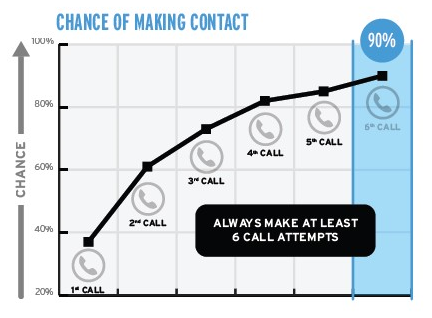In a company, the Marketing and Sales teams must establish common goals to drive strategy to results. These goals relate to qualified leads, a concept that should be clear to both departments from the outset.
In a company, the Marketing and Sales teams must establish common goals to drive strategy to results. These goals relate to qualified leads, a concept that should be clear to both departments from the outset.
But the compromises between Marketing and Sales don’t end there. Let’s think about the company’s goals. What is the number of sales to be made weekly and monthly to reach them? And to get these sales, how many opportunities do you need to work on? Finally, how many qualified leads must be delivered to sellers to be successfully contacted?
From this we understand that both teams (Marketing and Sales) have their responsibilities. Today we are going to focus on the phase after delivering leads: the sales commitment to contact potential customers. We address 5 key concerns.
1. Quick response to leads
The later the lead is contacted, the more the possibility of business decreases. It’s no use generating a (super) qualified lead if the seller will only contact you one week after the conversion. Marketing and sales have to generate leads and contact them within the timings defined by the company. There is no ideal time to make the first approach. Just remember that the contact should be made as soon as possible.

2. The first contact should be consistent and genuine
Marketing and Sales teams know that, even when qualified, not all leads are eager to get in touch. There are good practices that can help a company’s salespeople to catch customer’s attention:
- Respect the time of the person on the other side;
- Ask for permission to start a conversation;
- Clarify the reason for the contact;
- Relate the approach to the form completed by the person in the conversion;
- Provide relevant contentduring the sales process.
On first contact, the seller must show genuine concern for the customer’s needs. The idea is to understand what brought you to the website, what your need is and if it’s time to solve it.
3. Minimum and maximum number of contact attempts
To find out the indicated number of contact attempts, follow one of these two sequences:
Sequence for “cooler” leads: Consists of a total of 6 calls and strategic sending of voice messages and emails. After the 1st call, the first voice mail and email should be sent. Do not leave messages until the 4th and 6th call attempts. To help you understand:
Call 1 – first voicemail and first email;
Call 2 – do not leave voicemail or email;
Call 3 – do not leave voicemail or email;
Call 4 – second voicemail and second email;
Call 5 – do not leave voicemail or email;
Call 6 – third voicemail and third email (last contact opportunity).
Sequence for “hottest” leads: This sequence involves a 9-call approach, leaving voice messages and emails on the 1st, 5th and 9th calls. Try mentioning email in voicemail and vice versa as it increases both effectiveness and response rate. Send different and interesting messages to each contact, so the lead has access to fresh and new content.
Call 1 – first voicemail and first email;
Call 2 – do not leave voicemail or email;
Call 3 – do not leave voicemail or email;
Call 4 – do not leave voicemail or email;
Call 5 – second voicemail and second email;
Call 6 – do not leave voicemail or email;
Call 7 – do not leave voicemail or email;
Call 8 – do not leave voicemail or email;
Call 9 – third voicemail and third email.
Even if you don’t have any answers (which is not common with “hot” leads), try this sequence to the end. If, in any way, you feel frustration in the potential customer, it is important to know how to stop.
We recommend a minimum of 7 contact attempts (varying between emails and phone calls) and a maximum of 12. This within a period of up to 14 days. After this period, it is likely that the lead has lost interest, so it must be “returned” to Marketing.

4. Return a lead to the Marketing team
The return of a lead by the Sales team implies that it is nurtured by Marketing. Only then will you be prepared for a new entry into the sales process.
It’s important to remember that “bounced” leads are one of the main sources of success for sales teams. The customer who contacted 6 months ago, at the time not interested in buying, can return to request more information, including prices.
This cycle only works well with a real commitment between Marketing and Sales: Sales know when to return a lead and Marketing knows how to work on its nutrition.
5. Permanent feedback between Marketing and Sales
Feedback from salespeople about leads helps improve the sales funnel in the following ways:
- Attracting the right people to the website;
- Generate leads with more chances of becoming customers;
- Generate better business opportunities.
- To align information between Marketing and Sales, it is important to have regular meetings – weekly, fortnightly or monthly, depending on their duration.
Commitments between Marketing and Sales help to work with a focus on the objectives and goals of the digital strategy. It is still very common to find companies in which teams, for various reasons, work independently. In such cases, it’s easy to see issues such as inconsistent delivery of qualified leads to sales or delays in the first contact. But it is not difficult to avoid these and other mistakes: it is enough that both departments assume the respective commitments.
Want to know more common mistakes and ways to avoid them? Subscribe to our blog and stay abreast of these and other matters related to Marketing. If your company invests in a strategy, it is important to be aware of everything we cover in this digital space!









